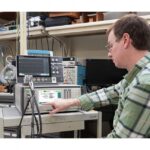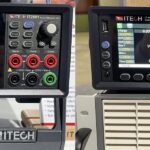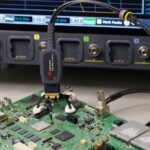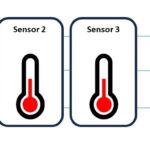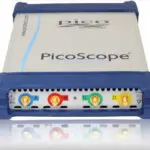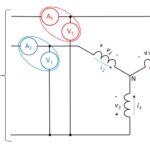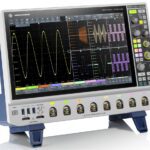Fluke’s 9500C oscilloscope calibrator with remote heads streamlines oscilloscope calibration from the front panel and through PC software.
Oscilloscopes
APEC 2024: Test equipment
Test equipment is everywhere. Every trade show has it regardless of the focus. Power is no exception. At APEC 2024, EE World visited several booths displaying test equipment: meters, oscilloscopes, source-measure units (SMUs), bench power supplies, and electronic loads. The photos and videos below highlight what we saw, presented in alphabetical order by company. In […]
Function, arb generators and multimeters enhance test equipment lines
RIGOL Technologies is expanding its family of ultra-portable instruments with the introduction of the DG800 Pro and DG900 Pro Series Function / Arbitrary Waveform Generators, along with the DM858 Series Digital Multimeters. Like their predecessors—the DHO800 and DHO900 Series High-Resolution Oscilloscopes—these new generators and multimeters deliver impressive performance and functionality in a compact and light […]
Digital oscilloscopes offer up to 2GSa/s sampling rate, 56Mpts memory depth
Uni-Trend US has introduced the UPO1000 Series digital oscilloscopes, which come in 50MHz, 100MHz, and 200MHz bandwidth options. The oscilloscopes feature a 4-channel design and use Fast Acquire Phosphor™ technology. The UPO1000 series has a real-time sampling rate of up to 2GSa/s and a maximum memory depth of 56Mpts. It also features a 500,000 waveforms […]
High-impedance, high-bandwidth oscilloscope probe captures serial bus signals
The Infiniimax 4 active probe from Keysight reaches 52 GHz, enough to see signals on PCIe 6/7, 800 Gb/sec Ethernet, DDR 5/6, and other high-speed serial buses. Oscilloscopes with 100 GHz and higher bandwidths can display signals on 224 Gb/sec PAM4 serial buses and they’ve been available for several years. Without probes of high enough […]
Product tryout: Tektronix 4 Series B oscilloscope
EE World gets its hands dirty on the latest Tektronix oscilloscope. So many features, so little time. When Tektronix gave the press a preview of the 4 Series B 12-bit mixed-signal oscilloscope and TekScope software, I asked to try the software. Days later, the real thing arrived in a transit case. Fortunately and unfortunately, today’s […]
How to test the automotive SENT protocol
Oscilloscopes and dedicated software can help analyze SENT data. In “What is the automotive SENT protocol?” we looked at the Single Edge Nibble Transmission (SENT) protocol, as defined in accordance with the Society of Automotive Engineers (SAE) J2716 standard. We reviewed the SENT message frame, which includes a synchronization/calibration pulse followed by a status nibble, […]
What’s the difference between a USB oscilloscope, spectrum analyzer, and digitizer?
USB oscilloscopes are highly versatile instruments. With the right software, they can perform functions usually reserved for spectrum analyzers and digitizers. In some cases, however, special instruments are needed for optimal results. This FAQ compares the functions of oscilloscopes, spectrum analyzers, and digitizers with USB interfaces. They are called USB devices because they connect to […]
How do I choose an electric motor, and how do I test it? part 4
You indeed can measure three-phase power in a motor with just two wattmeters. Part 3 of this FAQ concluded with a simplified diagram showing a test setup that included a programmable power supply, a motor under test, a mechanical load, a power analyzer, and host computer. The programmable power supply could simulate the AC line […]
R&S enters eight-channel oscilloscope game
The Rohde & Schwarz MXO 5 series of eight-channel and four-channel oscilloscopes feature fast capture and low-level triggering so you can see signal details.
